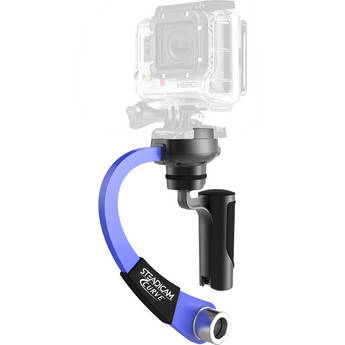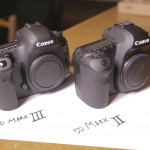Uncategorized |
Studio B Team

Sony is stepping up to the plate in a big way with their new PMW-F5 and PMW-F55 Digital Cameras ready to fully compete with Canon C500, the Red Epic, and Arri’s Alexa at competitive prices . It’s an exciting time to be alive, especially if you’re an independent filmmaker.
Sony — a little late to get into the game with the Sony F3 — originally looked as though they were focusing more on the traditional broadcast market and the super high end (Sony F35) than the digital cinema filmmaker. In my opinion, they dropped the ball while Red, Cannon and Arri ate their digital cinema lunch. But now things are changing, and it looks as though Sony isn’t going to roll over and play dead.
What’s so great about these new Sony cameras?
Well, based on the specs that have been released it looks as though Sony is going after the affordable 2K and 4k market in a big way. The image sensor promises “a superb dynamic range, the widest color gamut, and pristine image quality” whether you shoot in HD, 2K or 4K. With the optional AXS-R5 recorder, you can even make the jump to incredibly precise 16-bit Linear RAW in both 2K and 4K. Sony says the F55 cameras will have a color gamut very similar to their top tier F65, which will have all of the color aficionado’s drooling.

Camera Body Design and Function
In a design that mimics the best of Arri Alexa body, with a side view screen and a similar array of buttons, both cameras are following the trend of a modular design with as much packed into the real estate of the camera as possible.
Lots of good Lens Options
The F5 and F55 come loaded with a PL mount and Sony’s FZ mount, which you can easily pop off and attach a variety of lens mounts (Nikon, Canon EF, etc.) so you can use any lens under the sun. Sony is making a line of Zoom lenses that will fit on the FZ mount as well, providing zoom control and auto focus communication with the camera. So, unlike the Canon c300/500 or Red Cameras, the F5 and F55 can be operated like a cinema camera or a more traditional broadcast camera, perfect for events and concerts, with the benefit of beautiful 4k or 2k RAW Video.
Huge exposure latitude
The ability to render tones from deepest shadows to brightest highlights is a crucial test of any digital camera. The F55, with an impressive 14 stops of exposure latitude, has extraordinary low-light sensitivity and extremely low noise in the blacks.
The Sony F55 also employs a Revolutionary electronic global shutter
Here what Sony has to say about their new shutter: “The traditional CMOS image sensor uses a “rolling” shutter that can result in images with unwanted distortions like motion skew and flash banding. That can be annoying, especially when shooting visual effects or 3D. Anything but typical, the F55 sensor incorporates electronic global shutter. Rolling shutter distortions aren’t minimized, they’re completely eliminated.”
So What are the difference between the Sony F5 and the Sony F55?
• The F55 allows you to record 4K, 2K or HD internally to SxS Pro+ Cards, have electronic frame image scan, and have the same type of color filter array technology used in Sony’s F65
• The Sony F5 is less expensive to buy and rent, it can record 2K or HD internally to SxS Cards and will be able to record 4K externally. The F5 has a F3 type of color filter array.
• F55 has internal 4K recording: up to 60 fps
• F55 records HD to 180 fps
• F5 records HD to 120 fps
• F55 has 4K output via SDI connections
• F5 does not have 4K output
• F55 is rated at ISO 1250 (in S-Log 2). Other figures lurk.
• F5 is rated at 2000 ISO (in S-Log 2)
And what’s Common to both cameras
- Both the F5Exposure latitude is 14 stops.
- 5 and F5 record 4K (and 2K) RAW onto a modular onboard AXS-R5 recorder that uses a new AXS Memory Card.
- Both cameras have a Super 35mm 4,096 x 2,160 single CMOS sensor (11.6M total photosites, 8.9M effective) — Super 35mm
- 3-perf format size, 24 x 12.7 mm, 27.1 mm diagonal.
- The camera weighs about 4 lb 14 oz (body only), and measures 7 ¼” long x 4 ⅞” high x 4 ⅞” wide.
- It consumes 12 V DC (11 V – 17 V) at about 25 W in 4K at 60P.
- There are 3 behind-the-lens optical filters: clear, ND 0.9 (3 stops) and 1.8 (6 stops).
- Electronic shutter angle is variable from 4.2 – 360 degrees.
- Shutter speeds adjust from 1/24 – 1/6000 second.
- White balance choices are 3200, 4300, 5500K, Memorized, and ATW (Auto).
- There are 6 standard Gamma Curves, and 6 HyperGamma
- Curves: HG1, HG2, HG3, HG4, HG7 and G8. The last two have 800% range, the difference is where middle gray is 33% and 42%respectively.
Conclusion
From what we’ve heard and seen, the F5 and F55 cameras make beautiful pictures and give you a big bang for your digital camera buck. Studio B Film is planning on purchasing a couple of each for our rental department when they are available, hopefully early in 2013, and we will be excited to use them on our own shoots. As soon as we get our hands on one, we will post some test footage in a future blog.
About Studio B FIlms Rentals
Studio B Films is a full service digital video camera rental house. You can check out our full compliment of cameras and other gear on our web site – Studio B FIlms Rentals
READ MORE
























